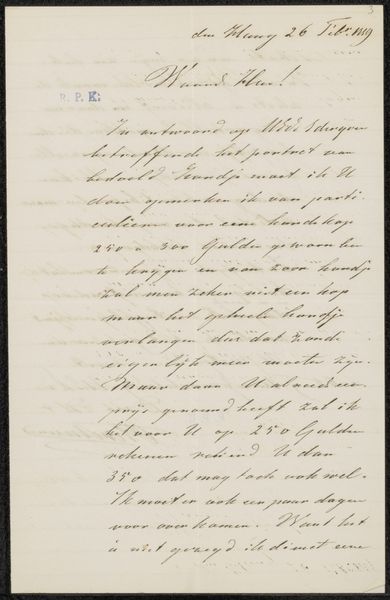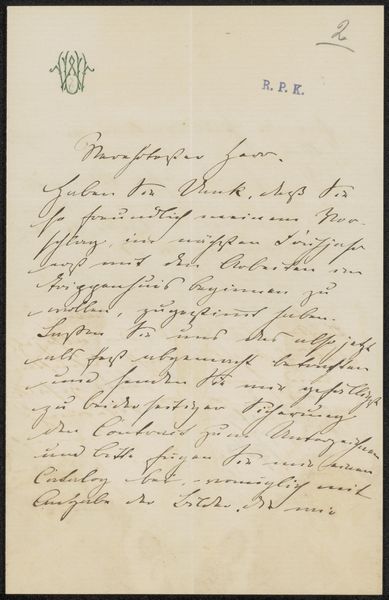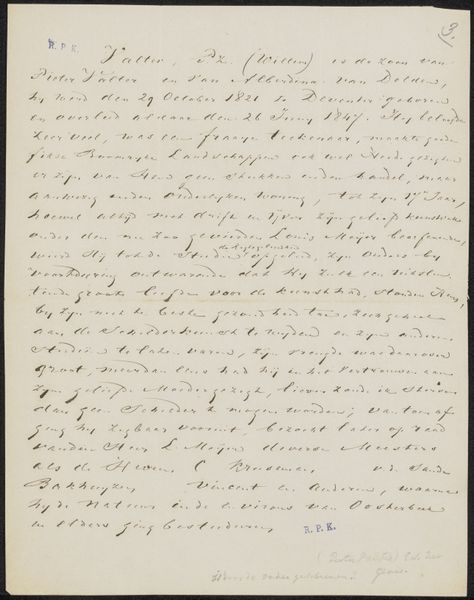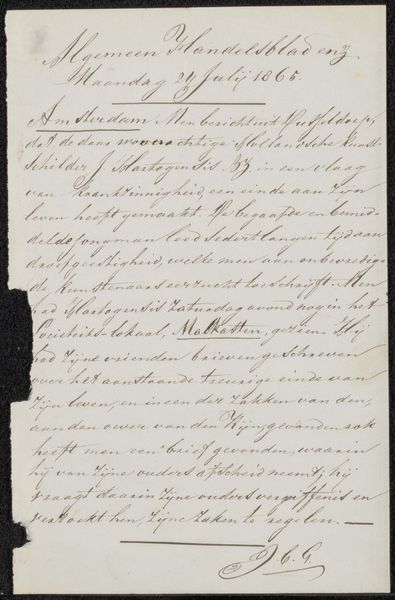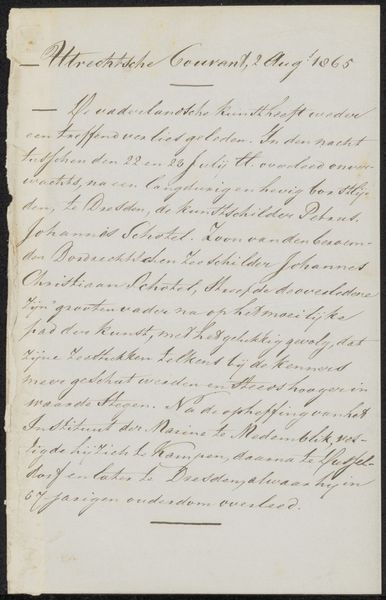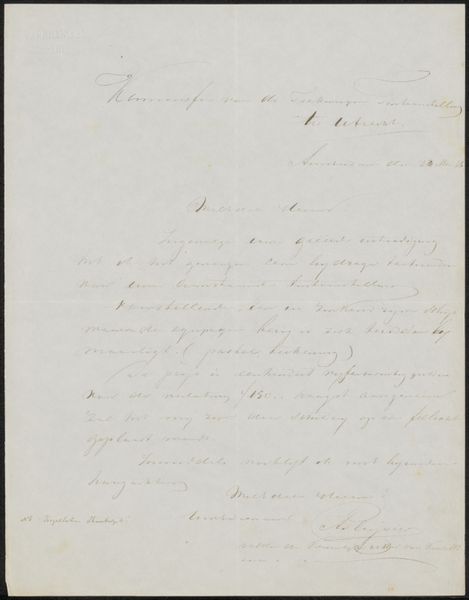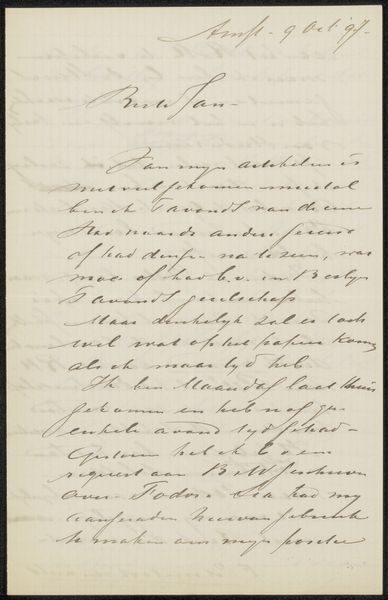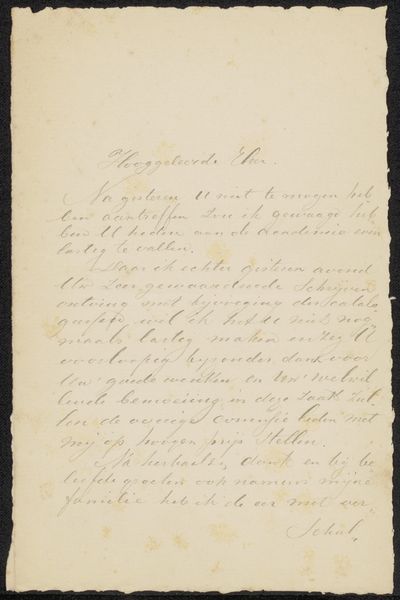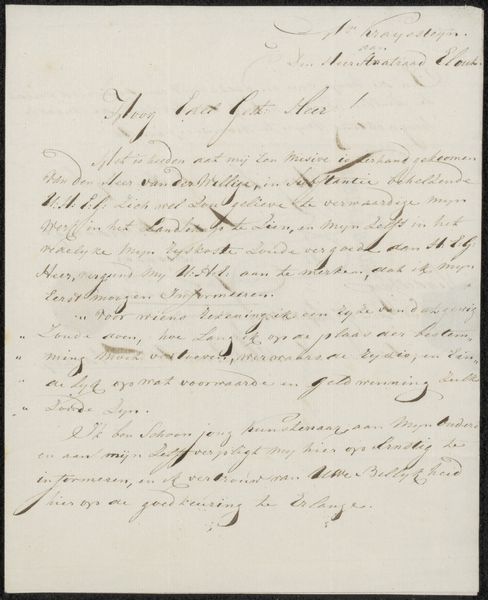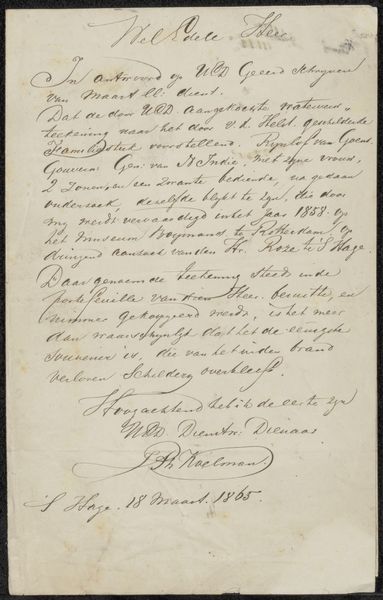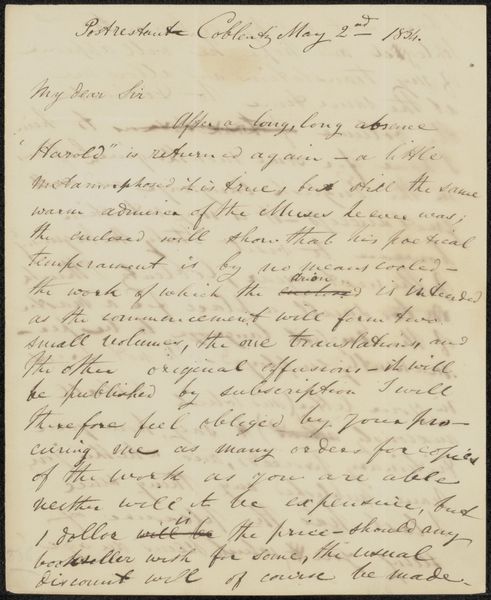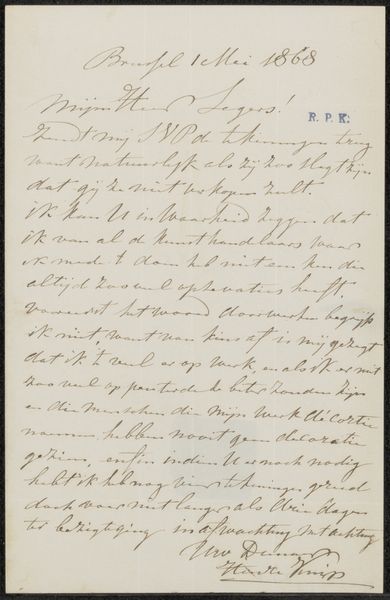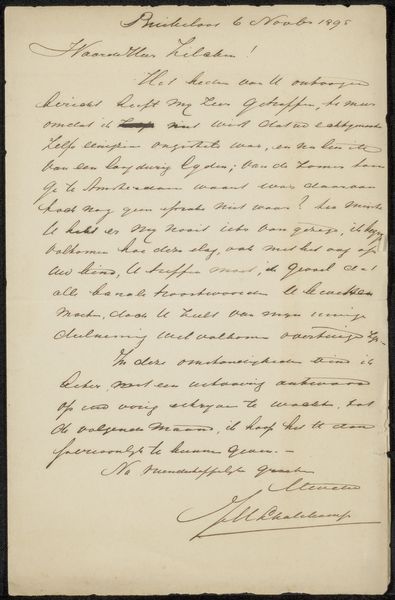
Brief aan de Comissie van Beheer van de Kunststichting Arti et Amicitiae Possibly 1844
0:00
0:00
drawing, paper, ink
#
drawing
#
paper
#
ink
#
romanticism
#
watercolor
Copyright: Rijks Museum: Open Domain
Curator: It gives the immediate impression of fragility, doesn’t it? Almost spectral, fading from view. Editor: Indeed. What we have here is a letter—the title is "Brief aan de Comissie van Beheer van de Kunststichting Arti et Amicitiae." It was very likely penned in 1844 by James de Rijk, using ink on paper. Curator: The visual texture of the handwritten script is so dominant. The letter's edges appear torn, imparting a rawness that contrasts with the formal grace of the lettering itself. See how the varying pressure of the hand creates subtle nuances of dark and light in each stroke. It’s beautiful. Editor: It is! Consider, however, the historical context of "Arti et Amicitiae"—an Amsterdam-based society championing the arts in the 19th century. Letters such as these were critical documents in the societal and institutional structures shaping the Dutch art world. Note the evidence of administrative markings in the lower left, too, signaling its reception and treatment by the Kunststichting. Curator: Yes, and the handwriting becomes almost abstract! Each character a small study in calligraphic line and form. The faded ink suggests both time and importance, a message considered precious and preserved. Editor: Yet it raises so many questions. What were the circumstances that lead to this letter being written? And what actions were taken by the commission that it was addressed to? One is struck, certainly, by the labor and material costs involved in producing such documents. The paper itself and the author’s careful penmanship speak of an older mode of governance and discourse, far removed from our own era of electronic messaging. Curator: I hadn't considered it that way. I am simply drawn to the rhythm and cadence, that strange beauty arising from these careful ascenders and descenders and, naturally, the contrasting darkness of the ink against the page. It embodies this tension so wonderfully, doesn't it? Editor: Absolutely. Studying pieces such as these serves to remind us about art's critical function within social and institutional structures. Each word written and recorded represents a contribution to wider debates and considerations which defined the art landscape and how decisions about art came into being at any given time.
Comments
No comments
Be the first to comment and join the conversation on the ultimate creative platform.
